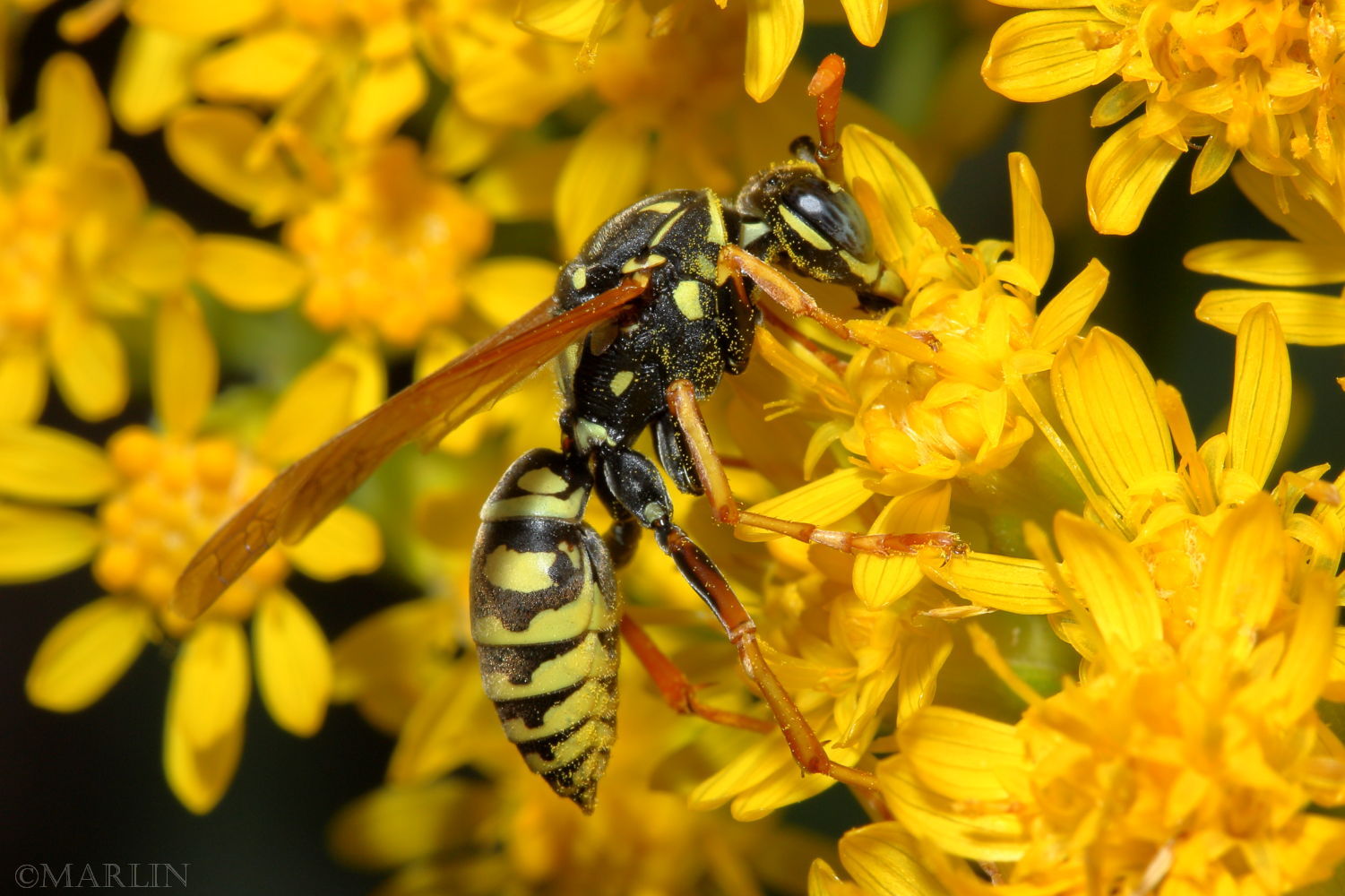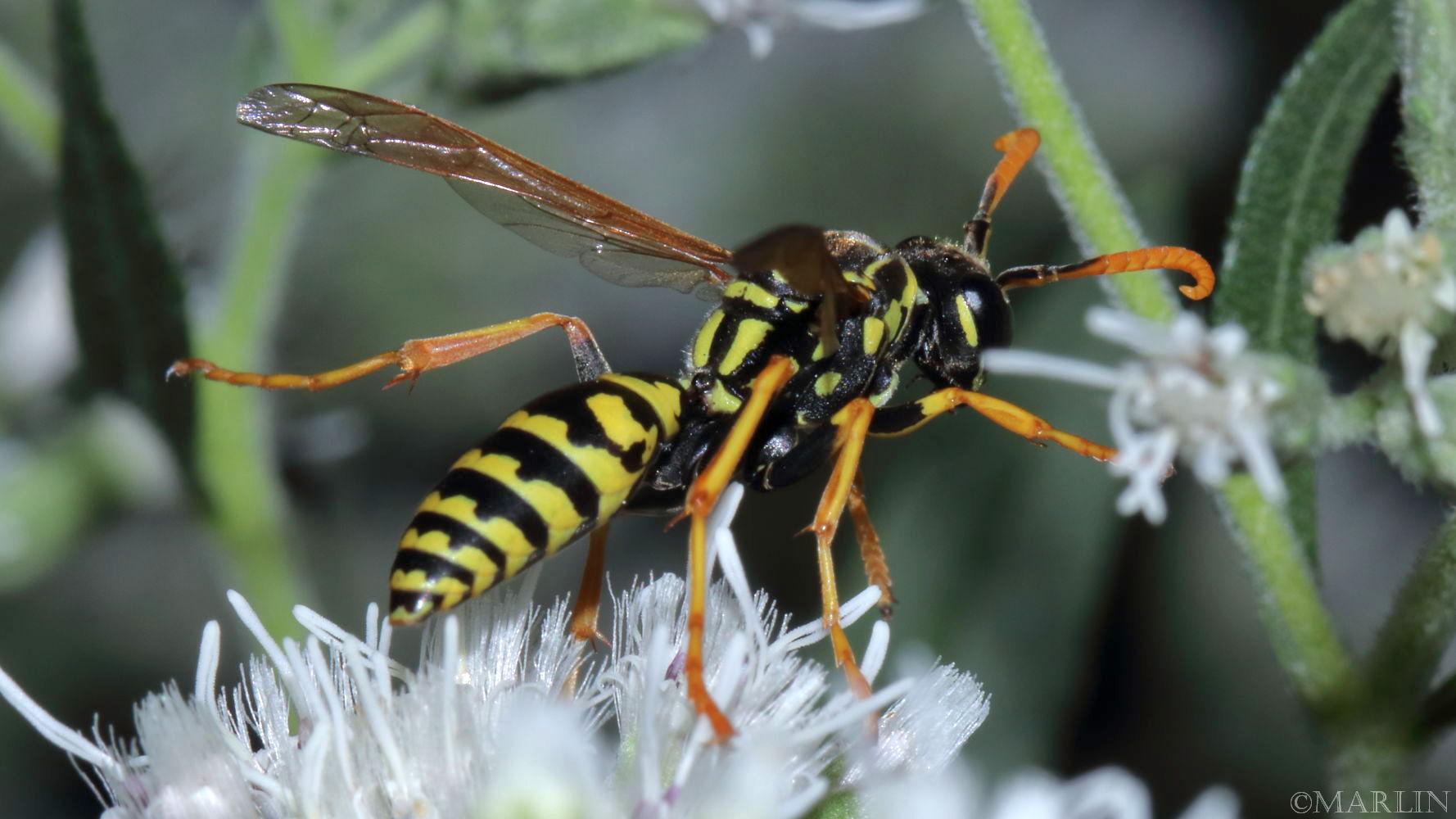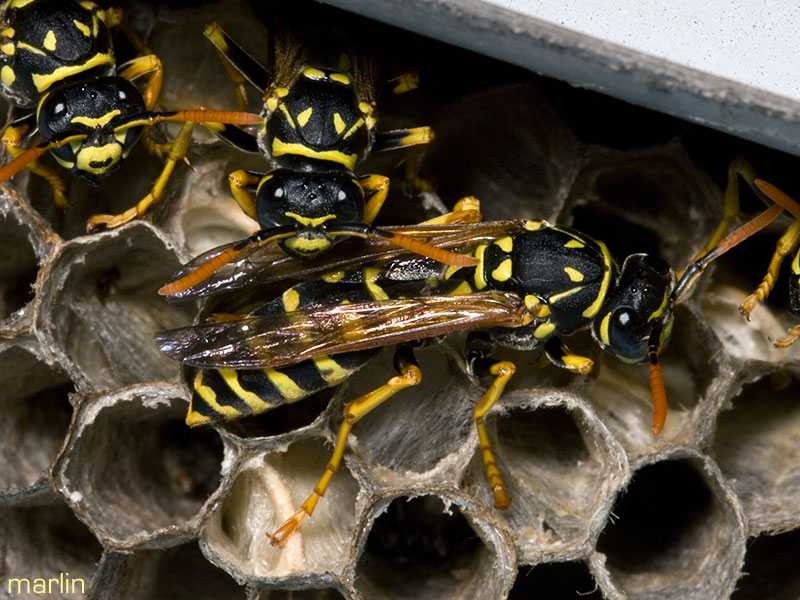Paper Wasp – Polistes dominula
This invasive species has caused great commotion amongst birders and other naturalists. Live adult wasps photographed in the wild at DuPage County, Illinois, USA.
What do paper wasp larvae eat? Box elder bug nymphs, for one thing. Adult wasps feed on flower nectar, but they also hunt for caterpillars or other small insects to feed their larvae. The wasp pictured below is processing a boxelder bug nymph; she chews the bug while absorbing its liquids, which serves two purposes: it makes the carcass lighter and easier to carry, and the liquid is regurgitated later as food for young larvae which have not yet made the transition to solid food.
Polistes with meatwad – skinned & chewed box elder bug nymph
This species was accidentally introduced into North America from Europe and has been spreading throughout North America. There has been a great flap among those who promote the purple martin and other bird species by building and maintaining bird houses; it has been said these wasps are more aggressive than the native variety, and greatly appreciate the environment inside such (wooden) structures.
The hexagonal structure of the brood cells is apparent in this wasp’s nest made of chewed up plant tissue and saliva.
Most paper wasps measure about 2 cm (0.75 in) long and are black, brown, or reddish in color with yellow markings. Paper wasps will defend their nest if attacked. Adults forage for nectar, their source of energy, and for caterpillars to feed the larvae. They are natural enemies of many garden insect pests.
The nests of most species are suspended from a single, central stalk, or pedicle, and have the shape of an upside-down umbrella.
Plant and wood fibers are collected by the wasps, mixed with saliva, and chewed into a paper-like material that is formed into the thin cells of the nest. The nests are constructed in protected places, such as under the eaves of buildings or in dense vegetation.
The colony is founded in early spring, soon after the queens emerge from hibernation. As the colony matures, males and the next year’s queens are produced. These queens mate with males and are the only members of the colony to survive through winter. In Autumn, the founding queen, workers (sterile females), and males all die. The newly mated queens hibernate. The following spring they emerge and begin the cycle anew. A similar life cycle is found in bumble bees.
Bees & Wasps Index | Bees & Wasps Main



